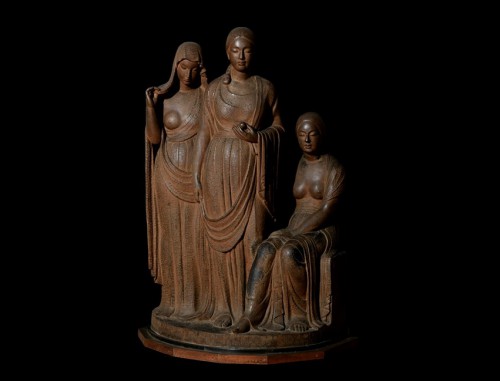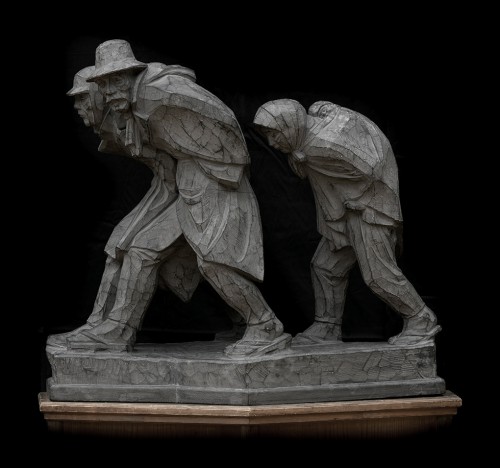企画展
130th Anniversary of the Birth of Ohta Nankai
| Term |
September 15(Sat),2018 〜
November 25(Sun),2018
Opening Hours |
||||
|---|---|---|---|---|---|
| Exhibition Hall | Temporary Exhibiton Room | ||||
| Admission Fee |
|
This exhibition celebrates 130 years since the birth of Ohta Nankai.
In 1888, the 21st year of the Meiji reign, Ohta Nankai was born in Nakamachi, the central part of Matsumoto, as the eldest son of a puppeteer. When he was 16, his father noticed his great talent and took him to the studio of famous wood sculptor Yonehara Unkai to be an apprentice. At that time, a surge of western art was rushing in, and Japan’s modern sculpture was about to emerge from the intertwining of Japan’s traditional techniques with western techniques.
Nankai gained his master’s trust and played an important role in creating the statue of Nioh at Zenko-ji, which became the masterpiece from Unkai’s late years. After he became independent, Nankai settled down in his hometown Matsumoto, creating images of the Buddha, statues of people and festival floats at the request of locals, while he continued to enter Bunten and Teiten, Japan’s prestigious exhibitions. With his outstanding skill, his variety of artworks have a sense that was refined by Okakura Tenshin’s instruction into Japan’s traditional art, Nihonga.
Nankai continued working in his hometown until his death at the age of 70 in 1959. He established an organization for artists and encouraged local artists to publish their works to promote the local art community.
In this exhibition, we show mainly works in wood following his career as a sculptor. We also hope you will enjoy Nankai’s varied artworks including ceramic sculptures and Nihonga that people have cherished in their daily life.
Last but not least, we would like to express our sincere gratitude to everyone who has lent us these invaluable works and supported us in many other ways to make this exhibition possible.
The Organizers



